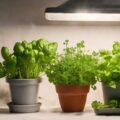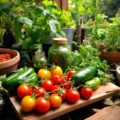Gardening enthusiasts often hear about USDA Planting Zones, but understanding these zones can be crucial to your gardening success. In this comprehensive guide, we will break down what USDA Planting Zones are, how to determine your zone, and how to use this information to create a thriving garden.
What are USDA Planting Zones?
The United States Department of Agriculture (USDA) Planting Zones, also known as hardiness zones, are a standard by which gardeners and growers can determine which plants are most likely to thrive at a location. The zones are based on the average annual minimum winter temperature, divided into 10-degree Fahrenheit zones.
How to Determine Your USDA Planting Zone
Determining your USDA Planting Zone is simple. You can use the USDA Plant Hardiness Zone Map, available on the USDA website. This map is color-coded and divided into 13 zones, each representing a 10-degree Fahrenheit difference in the average annual minimum winter temperature.
- Zone 1: -60 to -50 F
- Zone 2: -50 to -40 F
- Zone 3: -40 to -30 F
- Zone 4: -30 to -20 F
- Zone 5: -20 to -10 F
- Zone 6: -10 to 0 F
- Zone 7: 0 to 10 F
- Zone 8: 10 to 20 F
- Zone 9: 20 to 30 F
- Zone 10: 30 to 40 F
- Zone 11: 40 to 50 F
- Zone 12: 50 to 60 F
- Zone 13: 60 to 70 F
Why USDA Planting Zones Matter
Understanding your USDA Planting Zone helps you select plants that are suitable for your climate. Planting species that are not suited to your zone can result in poor growth, increased susceptibility to diseases, and even plant death. By choosing plants appropriate for your zone, you increase the chances of having a healthy, thriving garden.
Using USDA Planting Zones to Plan Your Garden
Once you know your USDA Planting Zone, you can start planning your garden. Here are some steps to help you get started:
- Research Plants: Look for plants that are recommended for your zone. Many plant labels and seed packets include zone information.
- Check Local Resources: Local gardening clubs, nurseries, and extension services can provide valuable advice on what grows best in your area.
- Consider Microclimates: Your yard may have microclimates, or small areas with slightly different conditions. Take these into account when planning your garden.
- Plan for Success: Choose a variety of plants that will thrive in your zone throughout the year. This includes perennials, annuals, and seasonal vegetables.
Common Misconceptions about USDA Planting Zones
There are several misconceptions about USDA Planting Zones that can lead to gardening mistakes:
- Zoning is Absolute: Zones are guidelines, not absolute rules. Local conditions such as soil type, sun exposure, and moisture levels also play a significant role.
- Only Cold Tolerance Matters: While the zones are based on minimum temperatures, other factors like heat tolerance are also important. Some plants may thrive in the winter but struggle in the summer heat.
- All Plants in Zone Will Thrive: Not all plants within a zone will necessarily thrive. It’s essential to consider each plant’s specific needs and the microclimates in your garden.
FAQ
What is the USDA Plant Hardiness Zone Map?
The USDA Plant Hardiness Zone Map is a map created by the United States Department of Agriculture to help gardeners determine which plants are most likely to thrive in their location based on the average annual minimum winter temperature.
How do I find my USDA Planting Zone?
You can find your USDA Planting Zone by using the USDA Plant Hardiness Zone Map available on the USDA website. Enter your zip code to find your specific zone.
Can I grow plants outside of my USDA Planting Zone?
While it’s possible to grow plants outside of your USDA Planting Zone, it may require additional care such as providing extra protection from cold or heat. It’s generally best to choose plants suited to your zone for the best results.
What if my garden has microclimates?
Microclimates are small areas within your garden with slightly different conditions. You can take advantage of microclimates by planting species that may not thrive in the overall zone but will do well in those specific areas.
Do USDA Planting Zones change?
USDA Planting Zones can change over time due to factors such as climate change. The USDA periodically updates the map to reflect these changes.









